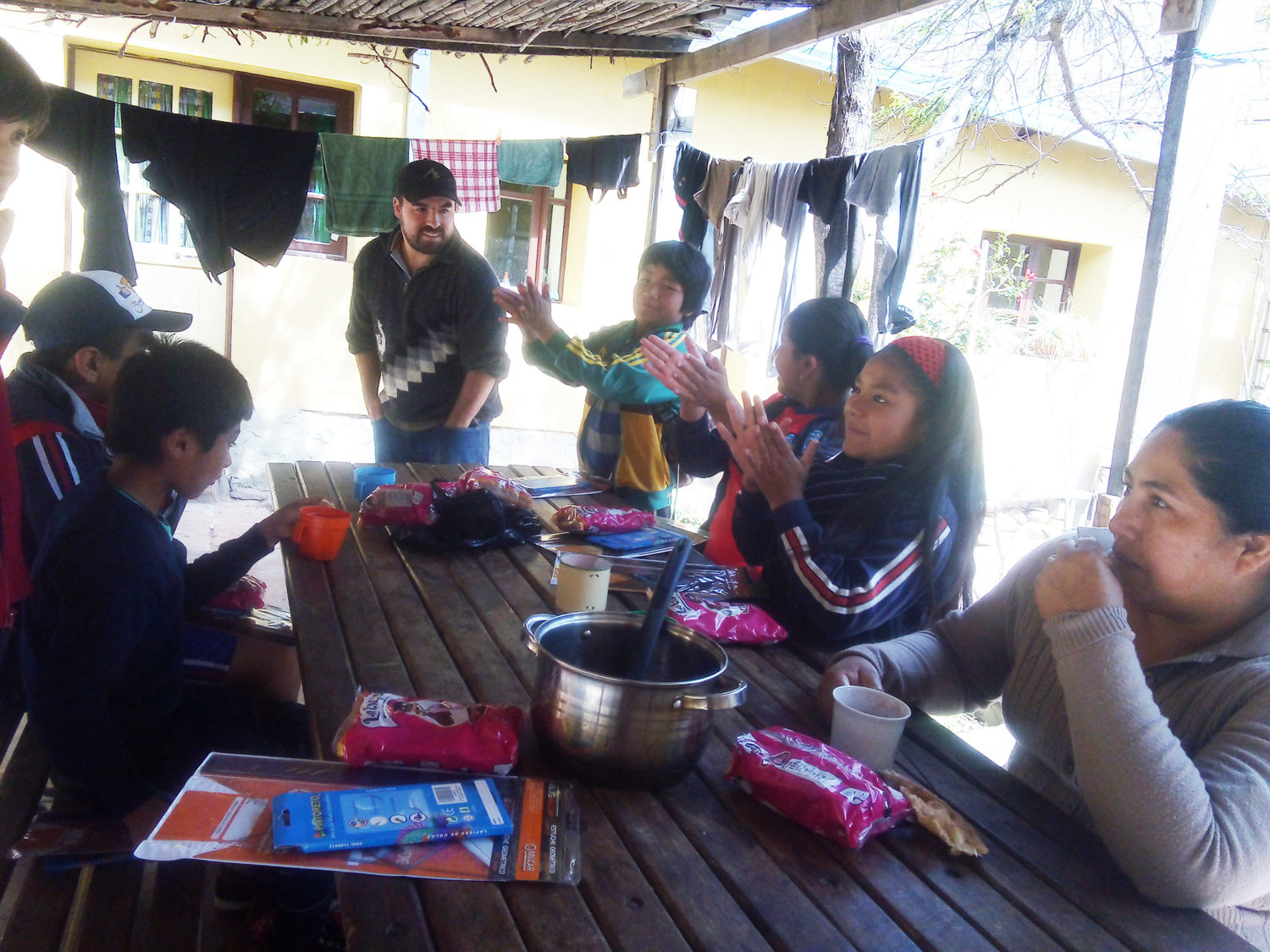
Led by Octavio, children practice sign language signs during their early-morning class.
I have always been impressed by the way Jesus healed people who were discriminated against and rejected by society—and by the profound impact that the encounter with Jesus and his healing had for those people’s lives. I often think that Jesus healed them not only in their illness but even more so in re-integrating them into society.
At the beginning of last year, we had noticed that there were kids in the school of Tacopaya who were deaf. Tacopaya is a mostly indigenous rural community in the Bolivian Andes, four hours from the nearest city. It is in this community that fellow Maryknoll lay missioner Minh Nguyen and I live and work. Minh is an experienced missioner, originally from Vietnam, who has missioned on several continents and has been in Bolivia for more than 10 years.
We realized that Octavio and Genoveva had been going to school for many years, but in reality they had learned little or nothing during that time. The teachers left them to themselves in a corner of the classroom, while they dedicated themselves to the other students who could listen and speak. Their classmates followed the examples of the teachers, ignoring them and seeing them as “weird.”
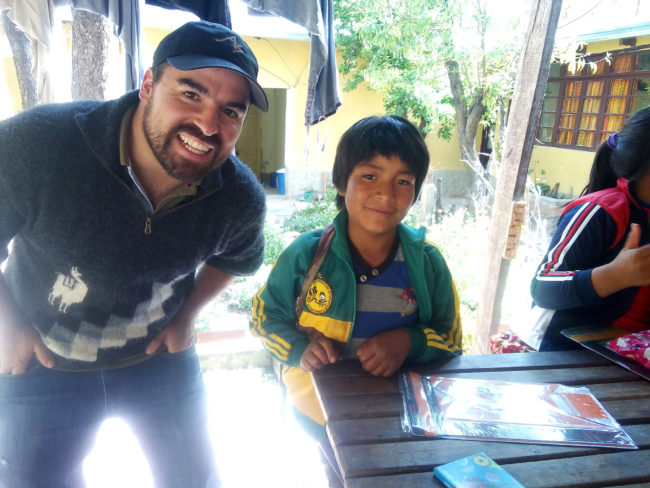
Octavio with Juan Gomez
The challenge was great, because we had never worked with people with disabilities and much less knew sign language. But when the call comes to your heart, there is nothing you can do but spring into action. So with the help of a tutor and instructional materials, we began to learn sign language.
When we approached the teachers, they did not want to give us time from their classes, so we started with individual sign-language classes for Octavio and Genoveva in the early morning before they start their classes at school. We started with the basics: numbers, alphabet and the simplest words babies learn. In other words, we started from scratch.
After a few months, we realized that it was not enough to work only with them, but that their classmates needed to become part of this effort as well. And so did the teachers, although we knew that adults with their busy lives find it difficult to make room for something new.
So we started very excitedly with sign language classes for the deaf and hearing-impaired students and for their classmates. The challenge and the call as usual was getting bigger, but feeling that we were on the right path, we pushed on with even more desire and commitment. We encouraged all the kids in the class to get up a little earlier and arrive at school before their normal classes begin to attend a voluntary sign language class.
Two came to the first class, four to the next class, and eventually more and more students showed up. At the end of the year, some 95 percent of the classmates arrived at school early to participate in the sign language classes. Our key was to make the classes fun, so that it was like a game to learn the signs and communicate in a new way with their classmates. How beautiful is the openness of children for the new, isn’t it?
They discovered that it was possible to communicate with the classmates who previously had been isolated in a corner.

Octavio with Minh and Juan and all his classmates who attend the voluntary sign language class.
When one is involved in the right project, one feels the presence of the Spirit, and things flow in a fun, cheerful and dynamic way. Don’t get me wrong, not everything has been fun and easy. The challenges and obstacles have been many, but we have overcome them and have found ways to move forward with this project.
It never ceases to amaze me how we start with our own plans and goals, but what is eventually achieved in the end is often a very different—and better—thing.
In this project, my goal was to teach as many signs as possible so that these young people could at least begin to communicate in a basic way with their peers. But what ended up being achieved, to my wonder and amazement, was that the classmates welcomed and included their deaf and hearing-impaired classmates in their daily activities. Now we see them playing, walking or sitting around together.
Our own efforts and the signs we taught were not enough to have achieved such a wonder. Something else happened here, somebody else worked through us!
For more on Juan’s ministry, see “Volleyball values.” For more on Octavio and Genoveva’s family, see “A new lease on life high up in the Andes.”

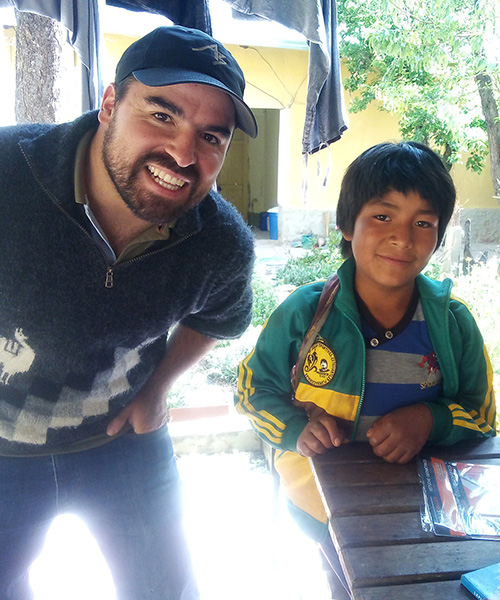

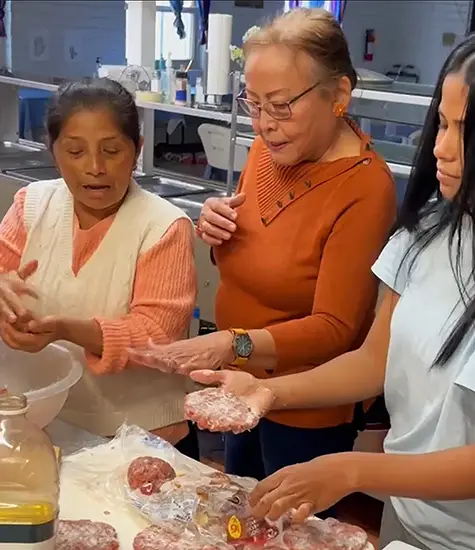
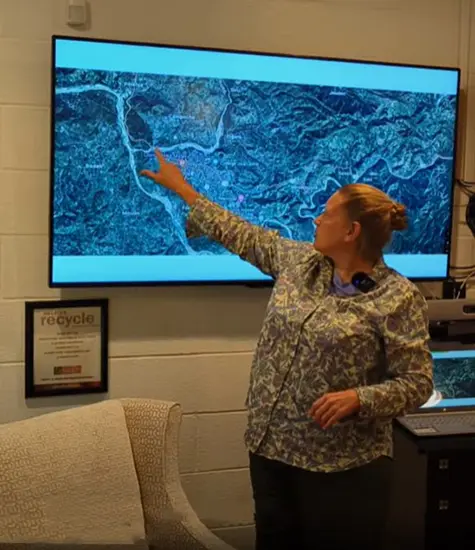
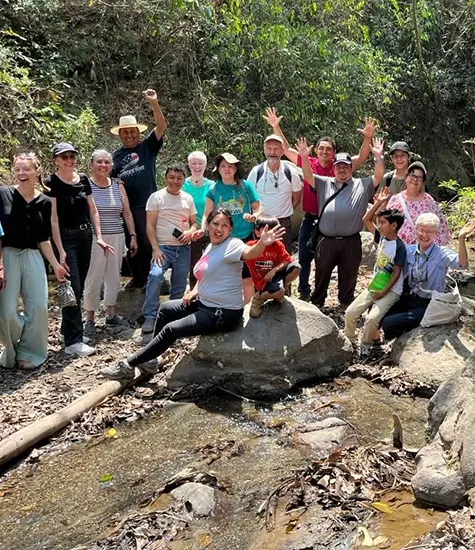




Thank you for sharing Juan!